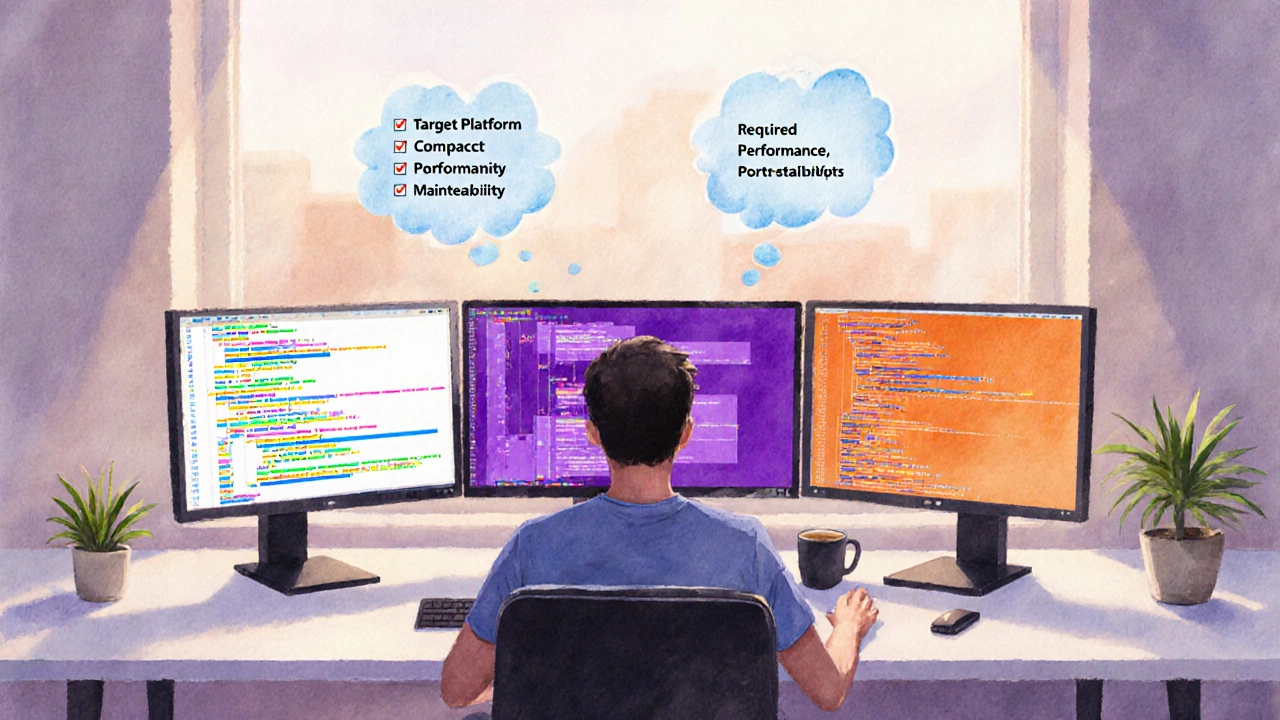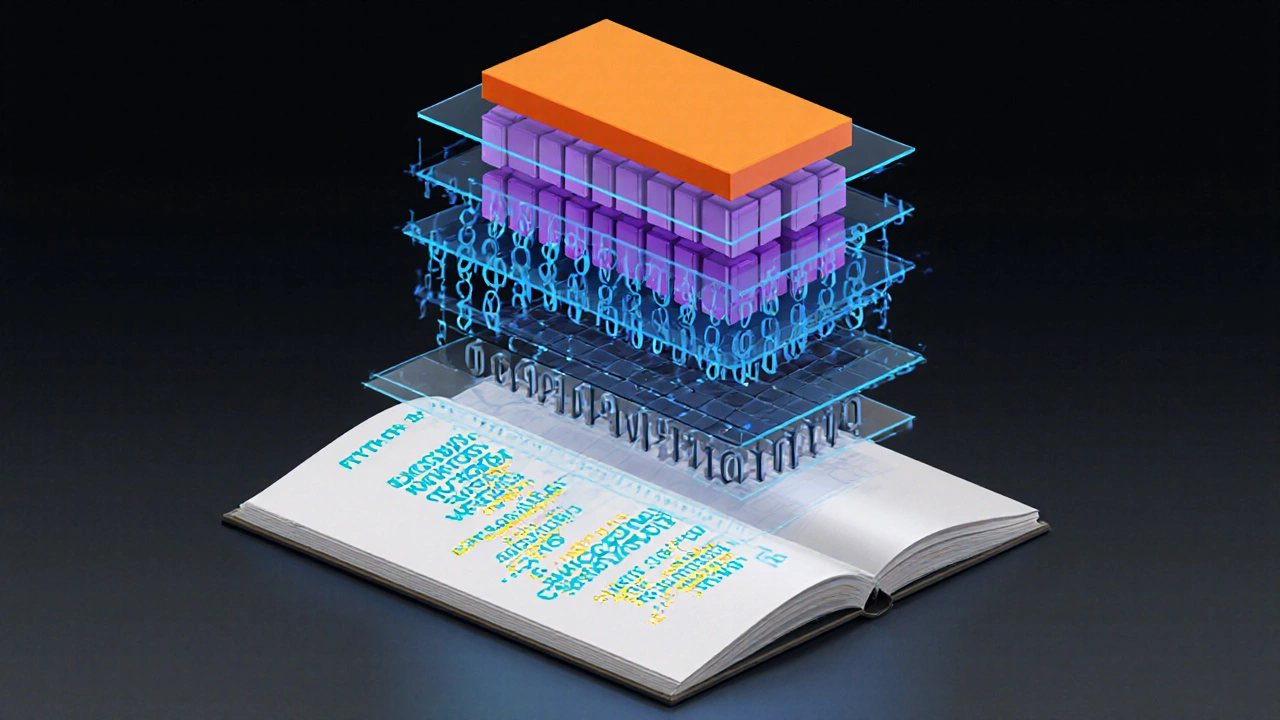Code Type Selector
Choose Your Project Requirements
When you hear the word “code” you probably picture a text file full of symbols. In reality, code comes in several distinct forms, each with its own role in turning ideas into running software. Understanding the five main types helps you choose the right tool for a project, troubleshoot issues faster, and communicate clearly with teammates.
What is Code?
Code is a set of instructions that tells a computer what to do. It can exist as human‑readable text, binary digits, or something in between. Different representations serve different stages of development, from writing and testing to deployment and execution.
1. Source Code: The Human‑Readable Layer
Source code is the text you write in a programming language like Python, JavaScript, or Java. It’s designed for people: clear syntax, comments, and structure make it easy to read, maintain, and evolve.
- Readability: High - developers can understand logic at a glance.
- Execution: Not directly executable; needs a compiler or interpreter.
- Typical use: Application development, open‑source projects, learning environments.
For example, a simple Python function that adds two numbers is source code that a developer can edit instantly.
2. Machine Code: The Binary Backbone
Machine code is the only language a processor truly understands: a long string of 0s and 1s. Each instruction maps to a specific hardware operation such as adding registers or moving data.
- Readability: None for humans - it’s pure binary.
- Execution: Direct - CPU runs it without translation.
- Typical use: Final product binaries, firmware, performance‑critical modules.
When you compile a C program, the compiler translates the source code into machine code tailored for your CPU architecture (e.g., x86‑64).
3. Assembly Language: Low‑Level Control
Assembly language sits just above machine code. It uses mnemonic codes like MOV or ADD to represent individual CPU instructions, making it marginally easier for humans to write and read than raw binary.
- Readability: Low - still tied closely to hardware.
- Execution: Assembled into machine code by an assembler.
- Typical use: Device drivers, boot loaders, performance‑tuned kernels.
Developers might write a few critical loops in assembly to squeeze out extra speed in a game engine.

4. Bytecode: Portable Intermediate Form
Bytecode is a compact, platform‑independent representation generated from source code. It cannot run directly on hardware but is executed by a virtual machine (VM) like the Java Virtual Machine (JVM) or the .NET Common Language Runtime.
- Readability: Medium - more structured than raw binary but still abstract.
- Execution: Interpreted or JIT‑compiled by a VM.
- Typical use: Cross‑platform applications, mobile apps (Android’s DEX), enterprise services.
When you write Java code, the Compiler turns it into bytecode (.class files). The JVM then translates that bytecode to machine code at runtime, allowing the same .class file to run on Windows, macOS, or Linux.
5. Script Code: Quick‑Turn Development
Script code refers to code executed by an interpreter without a separate compilation step. Languages such as JavaScript, Python, and Ruby are often used for scripting because they enable rapid prototyping and dynamic behavior.
- Readability: High - concise syntax aimed at developer productivity.
- Execution: Interpreted line‑by‑line or JIT‑compiled on the fly.
- Typical use: Web front‑ends, automation scripts, glue code.
For instance, a Node.js server runs JavaScript script code directly, letting you iterate on features without rebuilding binaries.
Comparison of the Five Types
| Code Type | Human Readability | Execution Speed | Platform Dependence | Typical Use Cases |
|---|---|---|---|---|
| Source code | High | Varies (needs compilation/interpreting) | Independent (language‑level) | Application development, teaching |
| Machine code | None | Maximum (runs directly on CPU) | Highly dependent (CPU architecture) | Compiled binaries, firmware |
| Assembly language | Low | Very fast (after assembling) | CPU‑specific | Drivers, boot loaders |
| Bytecode | Medium | Fast (JIT‑compiled) | VM‑independent, but VM‑specific | Cross‑platform apps, Android |
| Script code | High | Moderate (interpreted/JIT) | Generally platform‑agnostic | Web scripts, automation |

Choosing the Right Code Type for Your Project
Not every project needs the same level of abstraction. Here’s a quick decision guide:
- If you need the absolute fastest performance and have control over hardware, target machine code or write critical sections in assembly language.
- If you want to ship a product that runs on multiple operating systems without rebuilding, consider a language that compiles to bytecode (e.g., Java, C#).
- For most web and desktop applications, start with source code in a high‑level language and let the Compiler or Interpreter handle the rest.
- When speed matters but development time is tight, blend script code for glue logic with compiled modules for hot paths.
- Always profile: a perceived bottleneck might disappear once you use proper algorithms rather than low‑level code.
Quick Checklist Before You Write
- Define the target platform (CPU architecture, OS, VM).
- Pick a language that produces the desired code type.
- Decide if you need a Virtual Machine at runtime.
- Consider maintainability: higher‑level code is easier to update.
- Plan testing strategy for the chosen representation (unit tests for source, integration tests for binaries).
Frequently Asked Questions
What is the difference between source code and script code?
Source code is a broad term that includes any human‑written code, whether it needs compilation (like C++) or interpretation (like Python). Script code specifically refers to languages that are typically interpreted at runtime, allowing rapid changes without a separate build step.
Can I convert assembly language directly to machine code?
Yes. An assembler translates each mnemonic instruction into its binary opcode, producing machine code tailored for the target CPU.
Why use bytecode instead of compiling straight to machine code?
Bytecode offers portability: the same .class or .dll file can run on any system that provides the appropriate virtual machine, saving time and effort when supporting multiple platforms.
Is script code slower than compiled code?
Generally, yes. Since scripts are interpreted or JIT‑compiled at runtime, they add overhead. However, modern JIT engines (V8 for JavaScript, PyPy for Python) narrow the gap considerably.
Do I need to learn assembly language as a beginner?
Not immediately. Focus on high‑level source code first. Assembly becomes useful when you need deep performance tuning or are working on low‑level systems like operating system kernels.

Write a comment